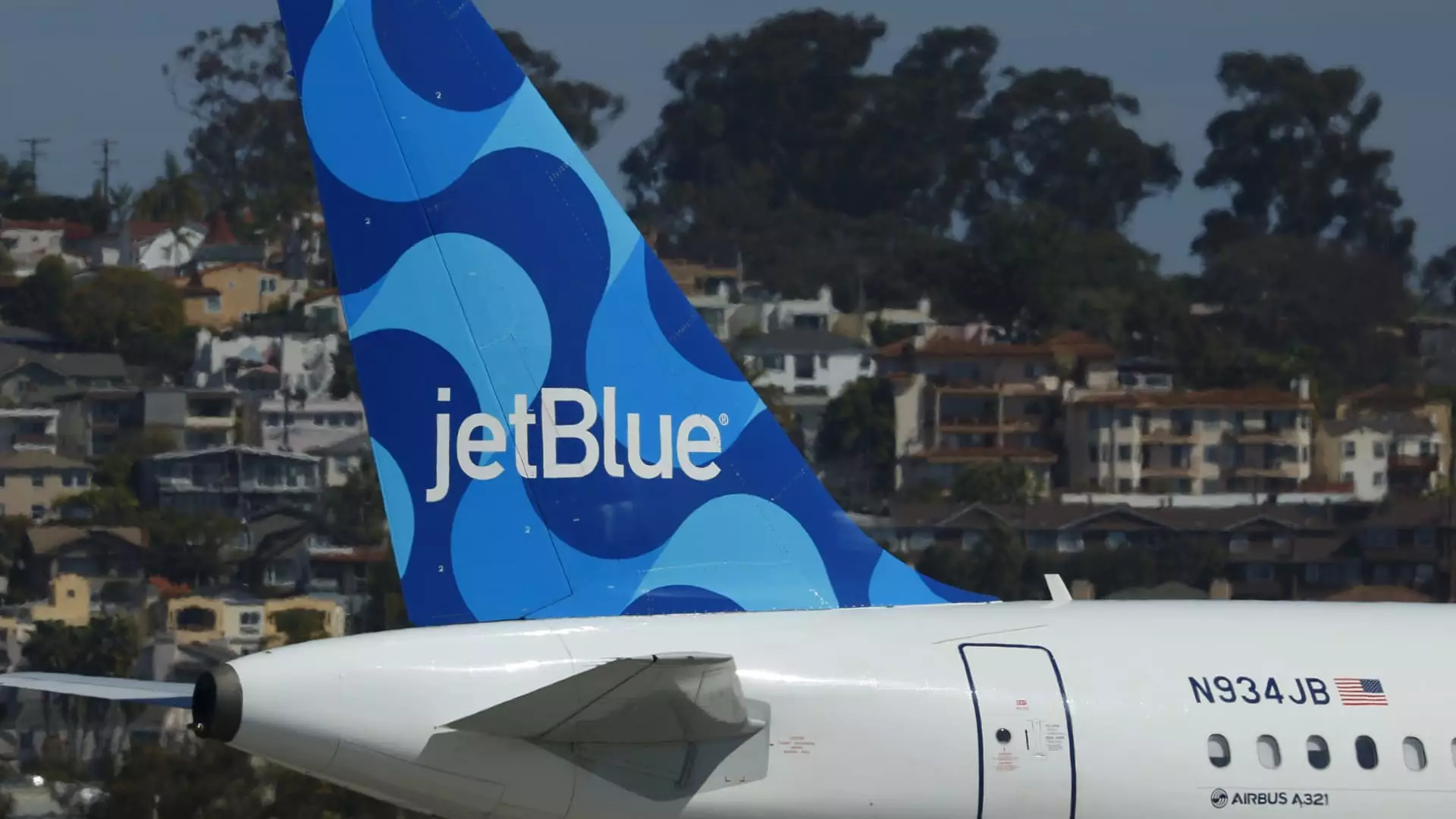In an industry where profitability often hangs by a thread, JetBlue Airways is grappling with unprecedented challenges that have shaken its financial foundations. CEO Joanna Geraghty’s recent communication to the airline’s staff highlights the stark reality the company faces: softer-than-expected travel demand has rendered break-even operating margins for this year “unlikely.” For anyone familiar with the volatile nature of the airline business, this declaration is more than a mere caution; it’s a clarion call that the airline needs to reevaluate its strategies promptly.
JetBlue’s executive candidness about its reliance on borrowed cash to sustain operations reveals the depths of its financial plight. When companies begin to depend heavily on external financing, it signals not just a temporary setback but a systemic issue within their business model. The very essence of an airline’s endurance—customer loyalty and strong bookings—appears to be eroding, indicating that the once-thriving carrier is facing an existential crisis. The anticipated recovery that Geraghty mentions seems increasingly optimistic, especially against a backdrop of diminishing demand coupled with rising competition.
Cutting Costs Amid Economic Uncertainty
With the air travel landscape shifting under their feet, JetBlue, like many U.S. carriers, is unveiling a series of cost-cutting measures. The decision to trim off-peak flights and eliminate unprofitable routes reflects a desperate attempt to stabilize its finances but also raises questions about the long-term viability of its network. When airlines start slashing services, it can lead to a negative feedback loop where decreased capacity makes air travel less accessible, further dampening demand.
Moreover, the announcement of halting retrofitting older Airbus A320 jets conveys a dispiriting lack of faith in a swift recovery. The investment in modernizing aircraft is typically aimed at enticing customers through an improved travel experience, yet here we see JetBlue choosing to forgo that innovation in favor of immediate savings. It’s a short-sighted approach in an industry that thrives on customer experience—a disservice to loyal travelers who have placed their trust in the JetBlue brand.
Sidelined Growth Initiatives
Equally troubling is the halt to the acquisition of Spirit Airlines and JetBlue’s terminated alliance with American Airlines. Both moves were intended not just to expand through consolidation but to increase market share. The judicial hurdles faced indicate a complex regulatory environment that constrains growth for airlines aiming to capitalize on consumer demand. By shelving these strategic moves, JetBlue is not just surrendering to setbacks; it’s also potentially relinquishing future opportunities for expansion and influence in the crowded air travel market.
In times of difficulty, JetBlue’s focus on forging a partnership with United Airlines might seem a glimmer of hope amid the turbulence. By allowing mutual bookings and shared frequent flyer miles, the airline could leverage United’s broader network to enhance its appeal. However, the fact that this partnership relies on JetBlue continuing to hire front-line employees while simultaneously cutting back elsewhere reflects internal discord between expansion strategy and financial caution.
Investing in the Future: A Risky Gamble?
Despite the challenges at hand, Geraghty mentions JetBlue’s commitment to enhancing premium experiences through the introduction of first-class seating and airport lounges. While these initiatives may attract high-spending customers, one must question the strategic timing. When basic operational challenges loom large, is it prudent to stretch resources toward luxury offerings? This strategy may alienate the budget-conscious flyer who has historically been the airline’s target demographic.
JetBlue is at a crossroads; it can either solidify its identity as an affordable, customer-centric airline or pivot towards a more premium service model. This decision is fraught with risks and speaks to a larger existential question: in an era of tightened budgets and changing consumer preferences, is there room for two distinct identities within the same airline? Choices made now will undoubtedly shape the trajectory of JetBlue’s future, but the mixed signals surrounding its operational decisions could leave travelers bewildered and uncertain about what to expect from the airline.

